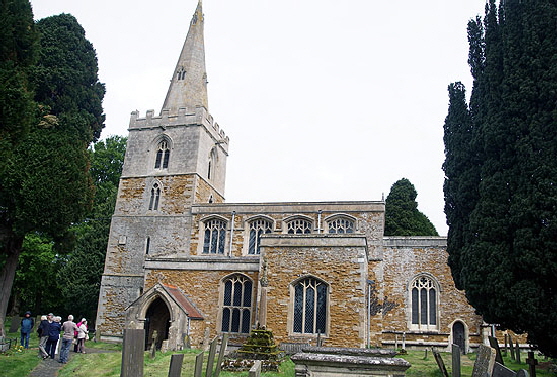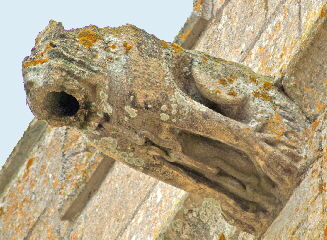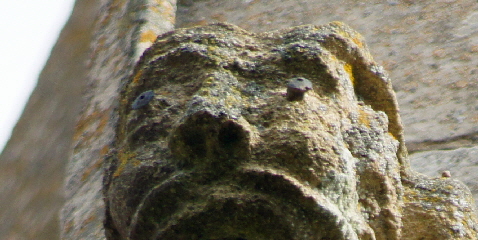|
Alphabetical List |
|
|
|
|
|
|
|
County List and Topics |
|
|
|
Please sign my Guestbook and leave feedback |
|
|
||||||||||||||||||||||||||||
|
churches. A cursory examination of the west end shows the original roofline and the arches have clearly been re-made to reach the original height of the nave walls. Whether or not the capitals date from that time is impossible to know but I believe that they pre-date this work. On the other hand, there are many internal carvings including several in the spandrels (the space where two arches intersect) and these are, I am certain, contemporary with that remodelling and the raising of the clerestory. |
|
Wymondham Church and the Mooning Men Group (MMG) |
|
If you have arrived at this page without looking at any of the associated pages about the MMG then this will make little sense you you, I am afraid. Only the tower has a carved frieze and there is no doubt whatsoever that it is in the style of my fictional “Lawrence of Leicester”. On one of the corners is his trademark “trident tailed lions”. There is a mooning man carving but there is no “flea”, suggesting that neither John Oakham nor his acolyte Simon Cottesmore were part of this MMG project. The spandrel carvings inside the church have black lead eyes. This reinforces the MMG involvement but there are no clues to link them to any of my named masons. The MMG clearly heightened the arcade as discussed earlier in order to match the new clerestory that they were constructing. It seems then that they also carried out the ruinously expensive leading of the roofs. Only the tower has battlements. The rest of the church, however, has plain but neat parapets that match those of the clerestory, concealing the surface of the lead. We must assume that the MMG also added the highest part of the tower where the frieze is found. The spire has lucarnes in the Perpendicular style reinforcing that notion. Here too we find gargoyles by the Gargoyle Master that include his iconic hitchhiker gargoyle and a gaping jaw gargoyle. There is another with a female head between his legs sporting a goffered caul headdress. All of them either have or have had lead eyes. All are in the cardinal points of the tower in keeping with MMG practice. The tower frieze is undistinguished. Lawrence’s style was as restrained as it was predictable. The gargoyles, however, are superb. |
 |
|
The south frieze of the tower by Lawrence of Leicester. The mooning men is second from the right and the “trident tailed” lion on the far right. |
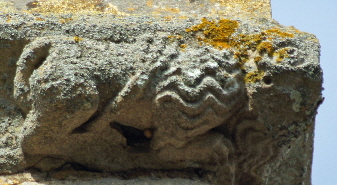 |
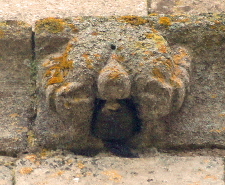 |
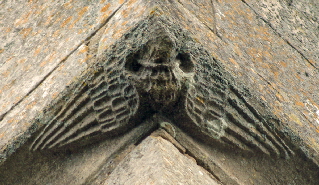 |
 |
|
Left: Lawrence of Leicester “trident tailed lion” motif. Second Left: The mooner peers out from between his legs. Second Right: This eagle spans one of the corners. Lawrence carved something almost identical on the tower frieze at Knossington ten miles away. Right: A typical Lawrence face. |
 |
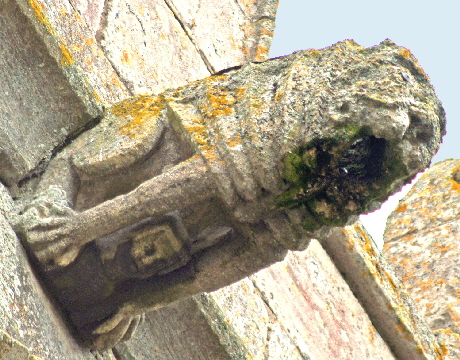 |
|
|
||||||||||||||||||||||||
|
Wymondham the Church |
||||
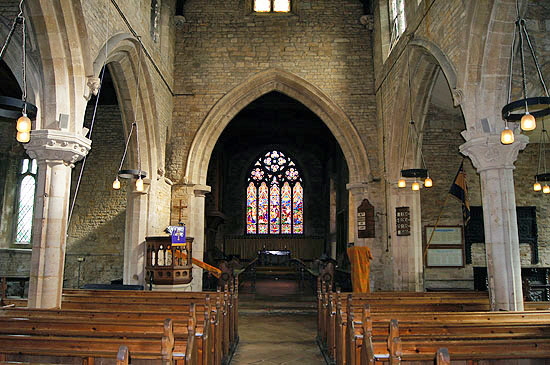 |
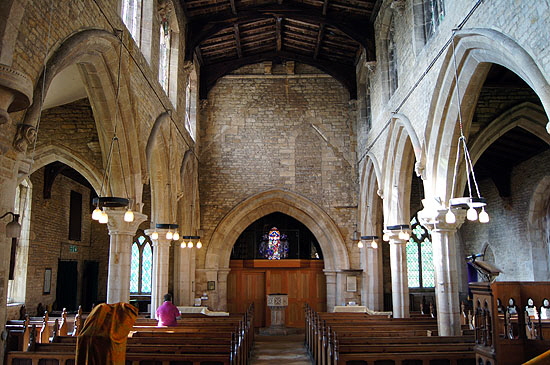 |
|||
|
Left: Looking east towards the chancel. The decorated capitals can be see either side of this picture and it should be noted that they have different profiles. Right: Looking towards the west. The original much lower and steeper roofline can be clearly seen on the west wall. The loss of this steep roof pitch compared with the much shallower one of the clerestory is why the church had to pay the crippling cost of lead roofs and parapets. Just under that original roofline is the outline of a filled-in doorway. The Church Guide suggests that this doorway used to connect with an external stair to its right. The round head would suggest that the tower is very early rather than later thirteenth century. Note the spandrel carvings between each pair of arches, |
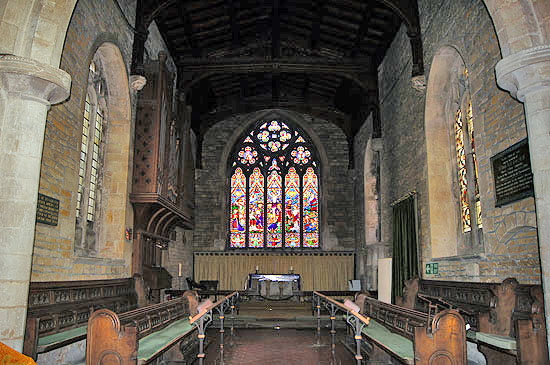 |
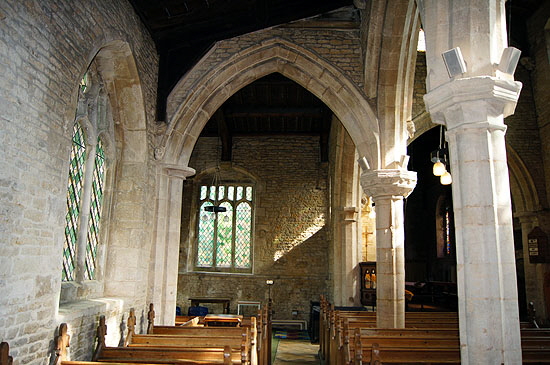 |
|||||||||||||||||||||||||||||||||||||||||||||||||||||||
|
Left: Looking into the chancel. The east window - a fine one - is Victorian. The Church Guide (a document not given to much humour, to be honest) says “Beneath the east windows and rightly hidden in shame is a reredos of glazed tiles in appalling but typical Victorian bad taste”. Love it! It also tells us that even the Victorians themselves criticised the garish stained glass. Right: Looking through an arch from the north aisle to the north transept. |
||||||||||||||||||||||||||||||||||||||||||||||||||||||||
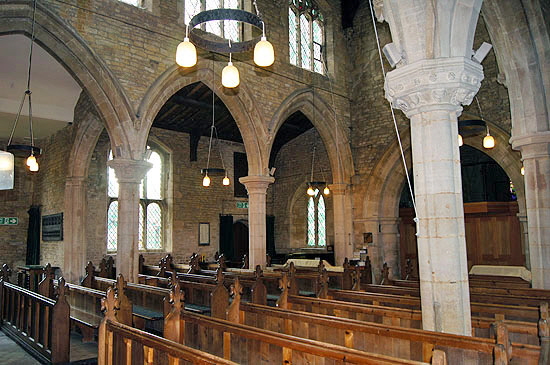 |
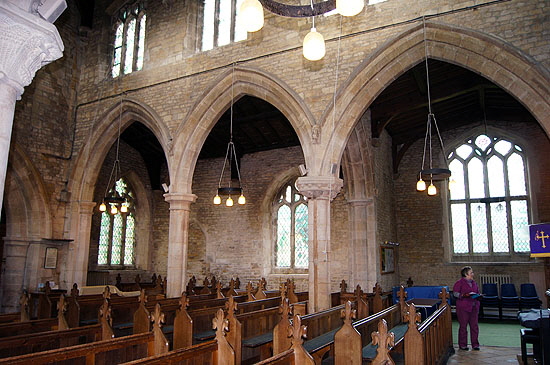 |
|||||||||||||||||||||||||||||||||||||||||||||||||||||||
|
Looking into (left) the north aisle and (right) the south aisle. |
||||||||||||||||||||||||||||||||||||||||||||||||||||||||
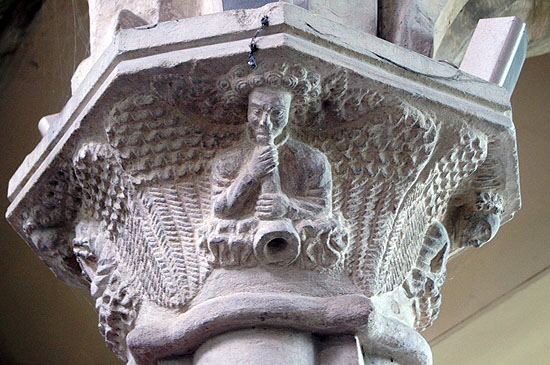 |
 |
|||||||||||||||||||||||||||||||||||||||||||||||||||||||
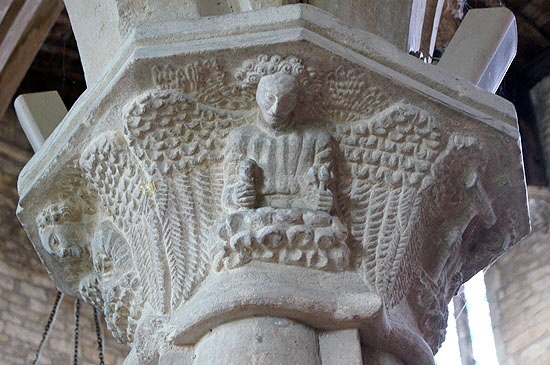 |
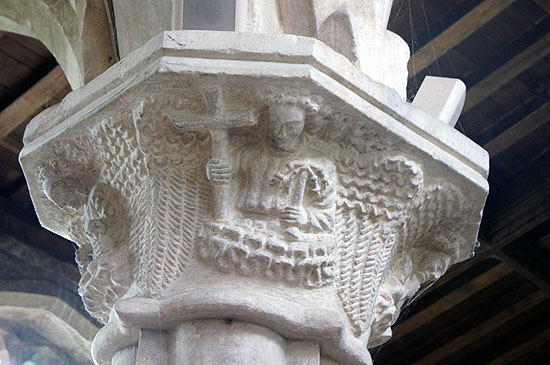 |
|||||||||||||||||||||||||||||||||||||||||||||||||||||||
|
The sculpted arch capital on the south side presents four angles in a variety of - er - angelic activities. Top Left: Playing a shawm. Top Right: Holding the moon and sun in the hands. Lower Left: Playing a computer game with two joysticks. Or something else. It could be holding nails in one hand and a hammer in the other, symbols of the crucifixion. Lower Right: Holding a cross and perhaps the scourge used to flog Christ? |
||||||||||||||||||||||||||||||||||||||||||||||||||||||||
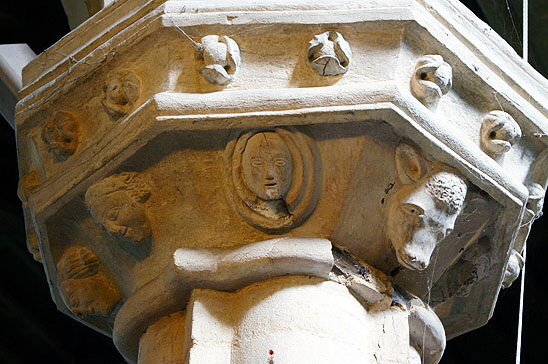 |
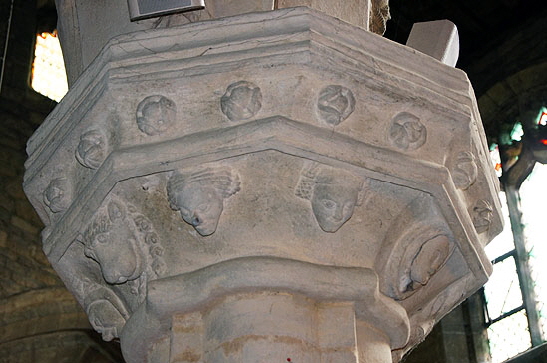 |
|||||||||||||||||||||||||||||||||||||||||||||||||||||||
|
The north historiated capital is more secular. A cow and a sheep can be seen as well as human heads. Pevsner would doubtless have said this was in Decorated style due to the courses of ballflower decoration. Had he been more clued into mediaeval fashion (I’m an aficionado, moi) he would have known that the crespinette headdress worn by the woman in the right hand picture dated to the reign of Edward III 1327-77. I hope you are impressed. So, yes Decorated style and probably pre-1348: it would be a while before anyone was commissioning any frivolous sculptures after the Great Plague. Even if they wanted to half the masons would have been dead and many of the rest forced to work on the King’s projects. |
||||||||||||||||||||||||||||||||||||||||||||||||||||||||
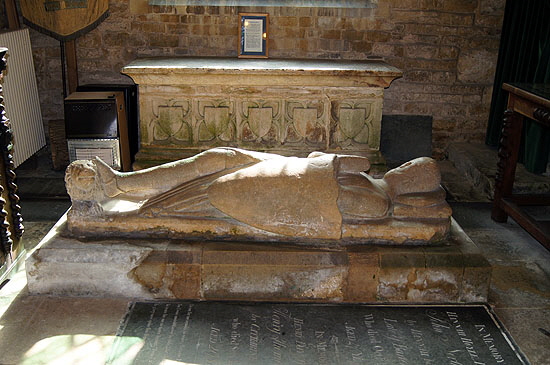 |
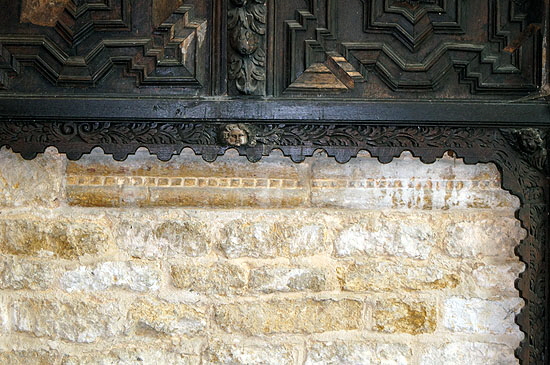 |
|||||||||||||||||||||||||||||||||||||||||||||||||||||||
|
Left: This is the sort of monument I love. This is Sir John Hamelin who went three times on Crusade. A true knight with his simple effigy. Not some popinjay of later centuries whose armour never felt the edge of another man’s sword yet demanded a tomb fit for a hero. I’m not much a fan of Crusaders but I suppose they thought they were doing the right thing by their God and I find this effigy moving. Right: A small but significant clue to the age of the masonry here is this short course of Early English nail head carving incorporated into a wall. |
||||||||||||||||||||||||||||||||||||||||||||||||||||||||
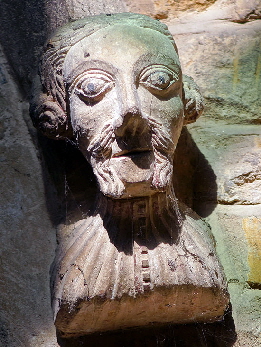 |
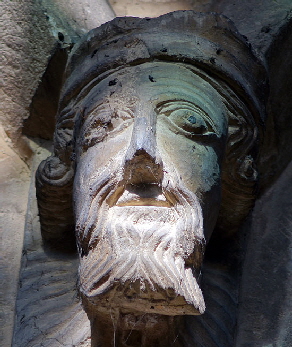 |
 |
 |
|||||||||||||||||||||||||||||||||||||||||||||||||||||
|
These are spandrel carvings which I am certain were executed by the MMG. This is one of the rare places that has black lead eyes inside the church, although some have unaccountably been lost.. I always have deep reservations about airy claims that sculptures “must be of real people” (it pleases foreign tourists, I think) because in my view few masons showed any ability to carve a proper likeness. These though probably are of real people. Note the buttons which indicate these were people of some substance. The woman on the right looks as if she might have been rather lovely. |
||||||||||||||||||||||||||||||||||||||||||||||||||||||||
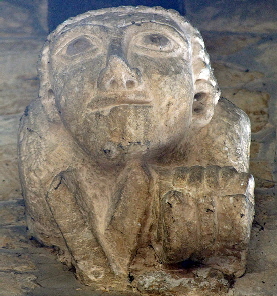 |
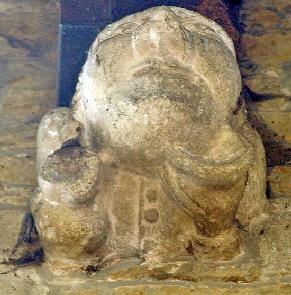 |
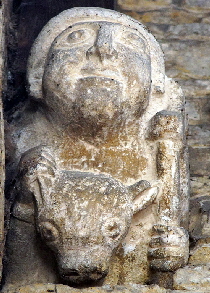 |
||||||||||||||||||||||||||||||||||||||||||||||||||||||
 |
||||||||||||||||||||||||||||||||||||||||||||||||||||||||
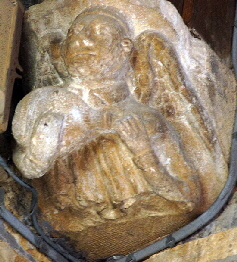 |
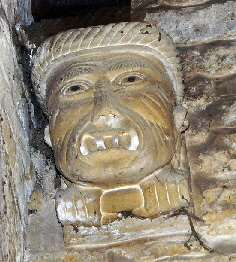 |
|||||||||||||||||||||||||||||||||||||||||||||||||||||||
 |
 |
|||||||||||||||||||||||||||||||||||||||||||||||||||||||
|
An array of other carvings around the church, making this a real place of entertainment. Both the left hand figures (upper and lower) are being assailed. One has a lizard about to crawl into his eye and the lower one has his face in the jaws of some monster. I do wonder what the shepherd (top right) is doing with a hammer in his hand. is it roast mutton day, do you think? The chap in the lower right is obviously hanging onto handlebars. Note some more black lead eyes in these pictures. |
||||||||||||||||||||||||||||||||||||||||||||||||||||||||
 |
||||||||||||||||||||||||||||||||||||||||||||||||||||||||
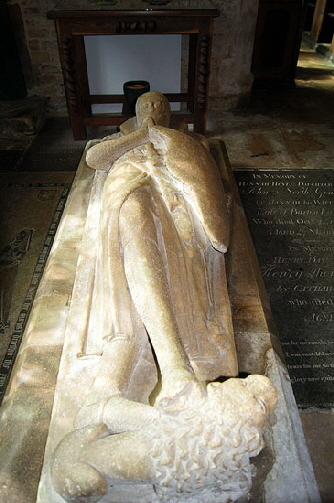 |
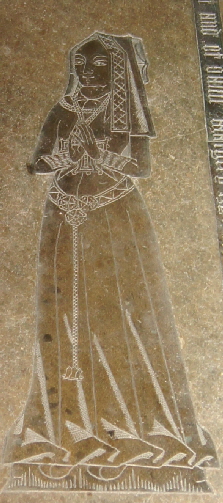 |
|||||||||||||||||||||||||||||||||||||||||||||||||||||||
|
Left: Another of Sir John Hamelin. Centre: To John’s left is a floor slab with brasses. The man has been done away with but his wife, Dame Margery Morris (d.1521) remains. She is wearing a “gable” headdress and veil, a style that lasted a very long time especially compared with the goffered caul that the MMG loved to carve. Right: The view to the west end of the south aisle. Both aisles are narrow and it seems that they were not expanded when the clerestory was raised as at so many other MMG churches. |
||||||||||||||||||||||||||||||||||||||||||||||||||||||||
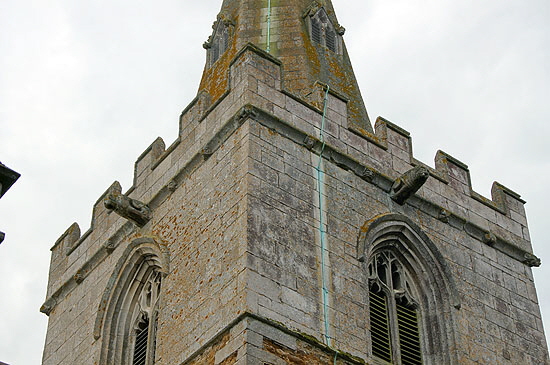 |
||||||||||||||||||||||||||||||||||||||||||||||||||||||||
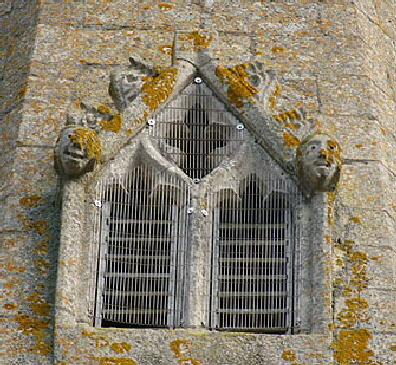 |
||||||||||||||||||||||||||||||||||||||||||||||||||||||||
|
Left: The north west corner of the tower showing the frieze and the Gargoyle Master’s creations at the cardinal points. Right: A lucarne on the spire. It was the practice at this time to adorn the lucarnes with sculptures even at heights where they could not possibly be seen. |
||||||||||||||||||||||||||||||||||||||||||||||||||||||||
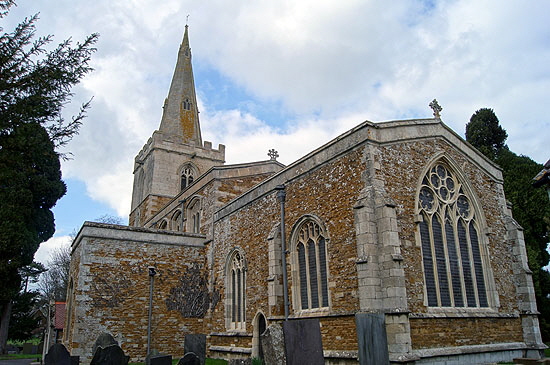 |
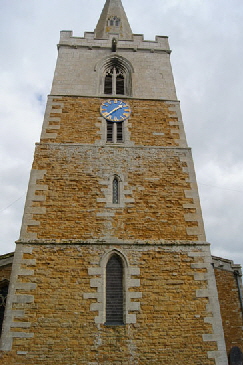 |
|||||||||||||||||||||||||||||||||||||||||||||||||||||||
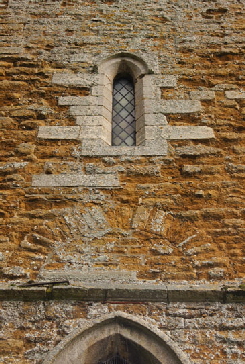 |
||||||||||||||||||||||||||||||||||||||||||||||||||||||||
|
Left: The church from the south east. It is an attractive and finely-proportioned church, I feel. Centre: The west tower from the west end. It has tall lancets of the Early English style. Right: Detail of the tower. Nobody seems to have remarked on this mysterious filled-in arch or doorway at the top of the first stage. Given that there is another round arch on the inside of the tower on the west wall, are the lower stages of this tower older than everyone supposes? |
||||||||||||||||||||||||||||||||||||||||||||||||||||||||
